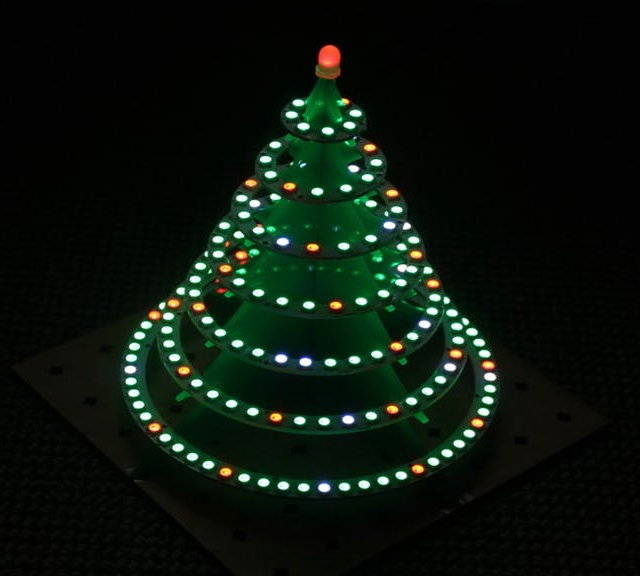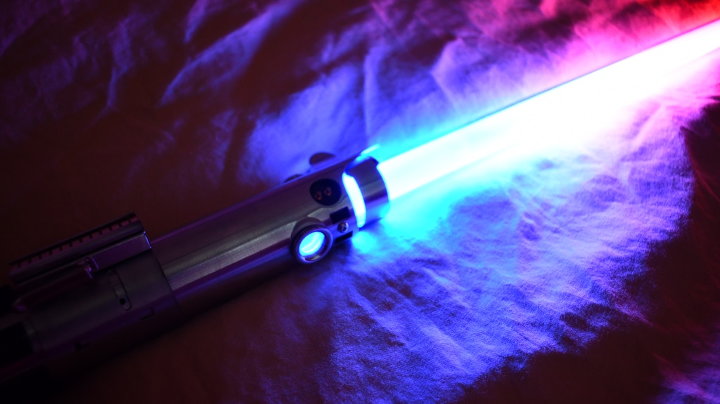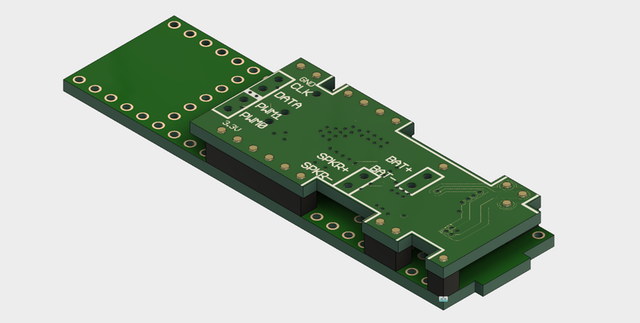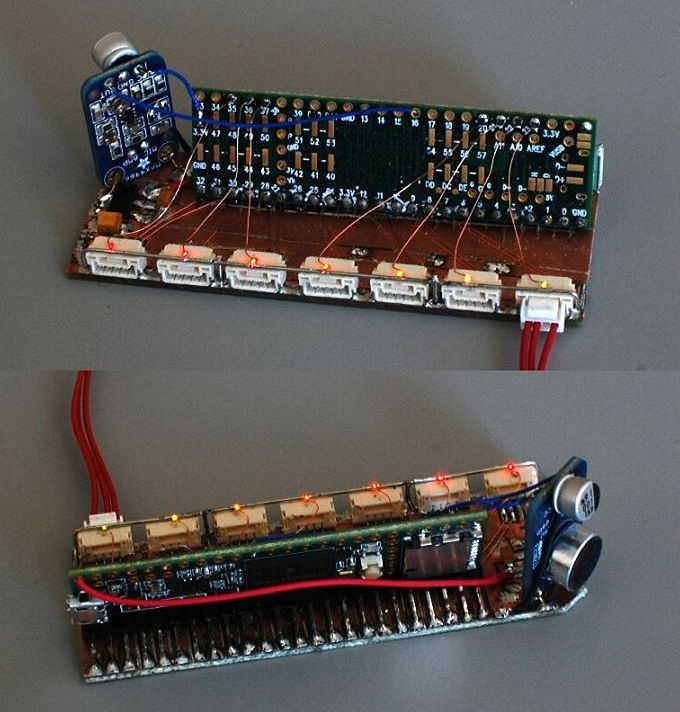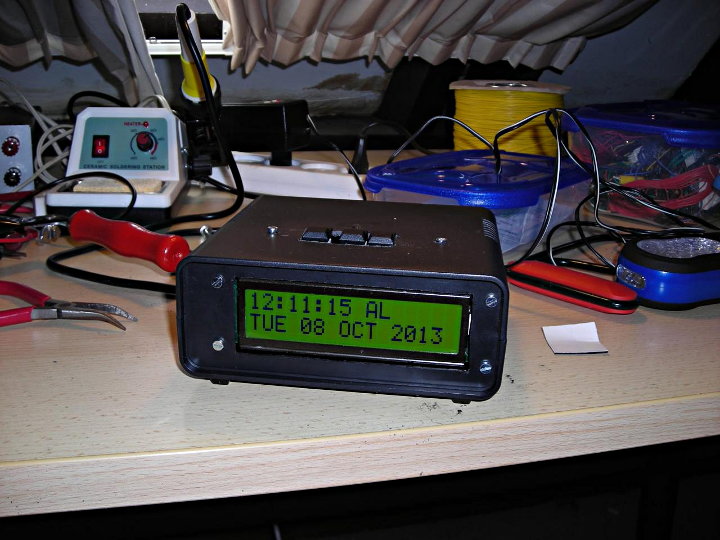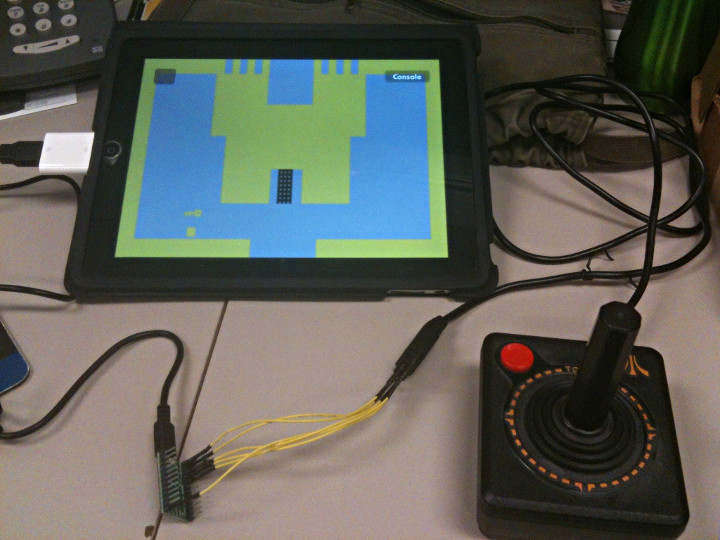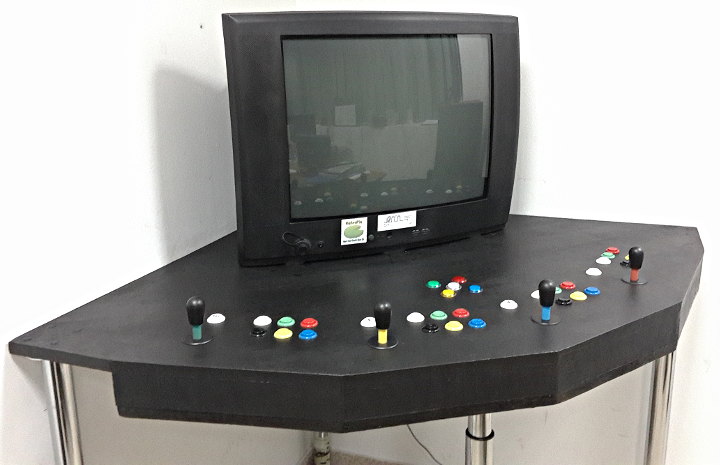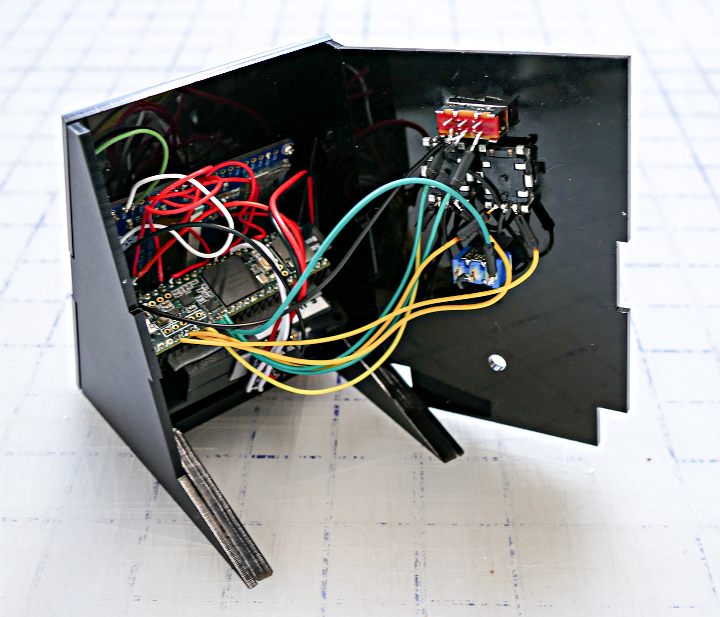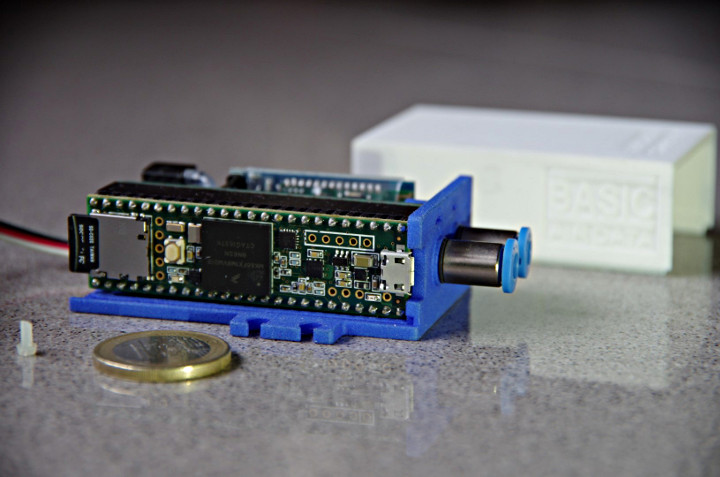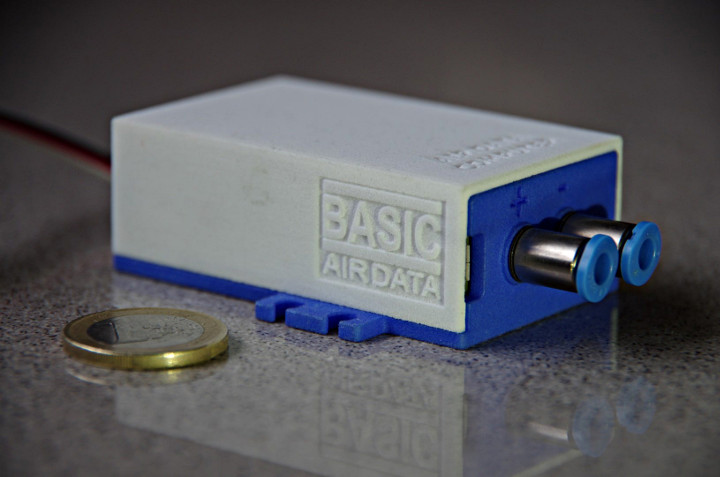Marcus Herbert took an inexpensive ukulele, cut the strings off, designed some circuits, and turned it into a fully functioning laser ukulele that sounds great.
Some of the features include:
- Custom tuning mode allows 128 notes as per the MIDI standard (12 notes [C, C#, D, D#, E, F, F#, G, G#, A, A#, B] across 11 octaves for C-G and 10 octaves for G#-B)
- Full soprano ukulele fretboard (12 frets)
- Four lasers as strings
- Virtual capo can be placed along any of the 12 frets
- Although this is in the shape of a ukulele, the computer software determines the final sound, so the physical instrument could end up sounding like whatever instrument you desire
- Note velocity can be customized from 0 to 127 and is displayed on the LCD screen
